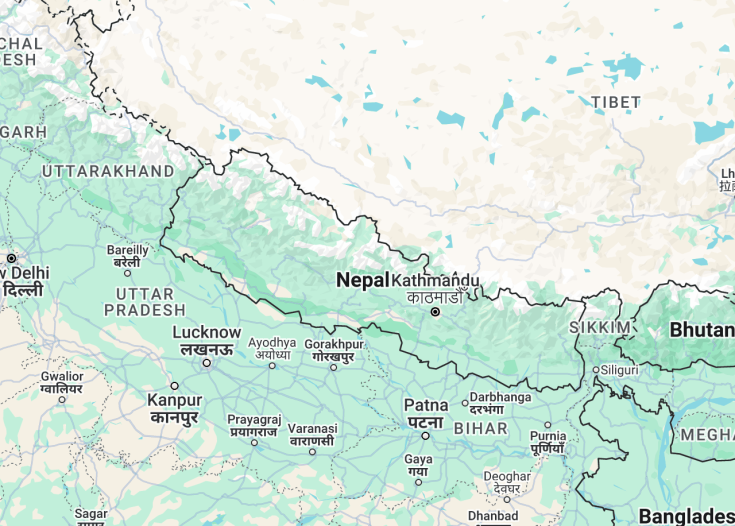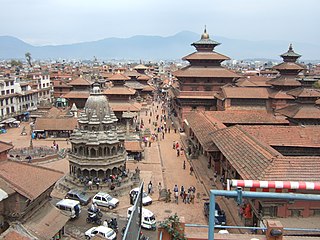Encompassed by the towering peaks of the Himalayas, Nepal is a harmonious blend of ancient temples, rich traditions, and majestic landscapes. From the bustling streets of Kathmandu to the serene trails of the Annapurna Circuit, Nepal offers a journey of discovery, adventure, and spirituality that attracts travelers from around the world.
Keep small denominations of Nepali rupees for local vendors. Many establishments, especially outside urban centers, may not have change for larger bills.
Plan your trip during a major Nepali festival for an enriching experience. Events like Dashain or Tihar offer a unique insight into Nepal’s cultural heritage.
Nepal: A Himalayan Gem
| Capital | Kathmandu |
| Time in Nepal | GMT+5:45 |
| Language spoken | Nepali |
| Population | 30,629,000 (World Bank) |
| Religion | Hinduism (81.3%) Buddhism (9%) Islam (4.4%) Kirant (3.1%) Others (2.2%) |
| Currency | Nepalese Rupee (NPR) |
| Airports | Tribhuvan International Airport Gautam Buddha Airport Janakpur Airport Pokhara Airport Bharatpur Airport |
Nepal, a Himalayan gem, is a land of awe-inspiring scenery, rich culture, and ancient history. Nestled between the majestic peaks of the Himalayas, including Mount Everest, this small South Asian country has captivated the hearts of travelers for centuries.
Where is Nepal located?
Nepal is located in South Asia, bordered by China to the north and India to the south, east, and west. It spans an area of approximately 147,516 square kilometers, making it about the size of the US state of Arkansas. The geographically diverse country is primarily mountainous, with the iconic Himalayas running along its northern border.
What is Nepal famous for?
Nepal is famous for its breathtaking landscapes, including the world’s highest peaks and lush valleys. It is best known for being home to Mount Everest, the highest mountain in the world, which attracts mountaineers from around the globe. Additionally, Nepal is renowned for its rich cultural heritage, with UNESCO World Heritage Sites such as the Kathmandu Valley and Lumbini, the birthplace of Lord Buddha.
History
(1200-1482) Early Malla Period
The history of Nepal begins with the Malla dynasty, which established itself in the Kathmandu Valley around the 12th century. The Mallas contributed greatly to the arts, culture, and architecture, many evidences of which can still be seen in the temples and durbar squares of Kathmandu, Bhaktapur, and Patan.
(1482-1768) Late Malla Period
Dominated by internecine strife, the Malla kings ruled in fragmented kingdoms. The art and architecture reached a pinnacle, but political instability was frequent. It was during this period that many of Nepal’s iconic festivals and traditions took shape.
(1768-1846) Shah Dynasty and Unification
King Prithvi Narayan Shah from Gorkha embarked on a quest to unify the fragmented kingdoms, leading to the establishment of the Shah dynasty. Under Shah rule, Nepal emerged as a singular entity, laying the foundation for the modern state.
(1846-1951) Rana Regime
The Rana regime was marked by autocracy. The Shah kings were relegated to a ceremonial role as the Ranas consolidated power. However, this period also witnessed modern infrastructural development, though with a heavy cost to democracy.
(1951-Present) Democratic Movements and Modern Nepal
Beginning in 1951, a series of democratic movements shaped Nepal’s political landscape. The country oscillated between democracy, monarchy, and a republic state. The signing of the Comprehensive Peace Agreement in 2006 marked the end of a decade-long civil conflict, and Nepal was declared a federal democratic republic in 2008.
Visit Nepal
What to see and do in Nepal
Nepal offers a unique cultural and natural experience for visitors. Here are some of the must-see attractions and activities in Nepal:
- Explore the ancient temples and palaces of Kathmandu, including Durbar Square, Pashupatinath Temple, and Boudhanath Stupa.
- Trek through the stunning landscapes of the Himalayas, including the famous Everest Base Camp trek.
- Visit the birthplace of Lord Buddha in Lumbini, a UNESCO World Heritage Site.
- Experience the vibrant local markets and bazaars, such as the Asan Bazaar in Kathmandu.
- Go on a wildlife safari in one of Nepal’s national parks, such as Chitwan National Park or Bardia National Park.
- Participate in adventure activities, such as paragliding, white-water rafting, and mountain biking.
Events in Nepal
Nepal is known for its vibrant and colorful festivals, which are celebrated throughout the year. Some of the major festivals in Nepal include:
- Dashain: The biggest and most important festival in Nepal, celebrated in September or October. It marks the victory of good over evil.
- Tihar: Also known as Diwali, it is the festival of lights celebrated in October or November. It is a time when houses are decorated with colorful lights and oil lamps.
- Holi: The festival of colors celebrated in March. It involves throwing and smearing colored powder and water at each other.
- Losar: The Tibetan New Year celebrated by the Tibetan community in Nepal. It usually falls in February or March.
These festivals showcase the rich cultural heritage and traditions of Nepal, and they are a great time to experience the local customs and celebrations.
Best time to visit Nepal
The best time to visit Nepal is during the spring (March to May) and autumn (September to November) seasons. These seasons offer pleasant weather with clear skies, making it ideal for outdoor activities and trekking in the Himalayas. The temperatures are moderate, and you can enjoy the beauty of the blooming rhododendrons in spring and the colorful autumn foliage in the fall.
During the monsoon season (June to August), Nepal experiences heavy rainfall, which can make traveling and trekking difficult. The winter months (December to February) bring cold temperatures, especially in the higher altitudes. However, this is also a great time to visit if you want to experience snowfall and enjoy activities like skiing.
It is important to check the weather conditions and the availability of transportation and accommodations before planning your trip to Nepal.
Is Nepal worth visiting?
Nepal is definitely worth visiting for those seeking a unique and diverse cultural and natural experience. The country offers stunning landscapes, including the majestic Himalayas and picturesque valleys, which are perfect for trekking and other outdoor activities.
Additionally, Nepal is home to a rich cultural heritage, with ancient temples, palaces, and UNESCO World Heritage Sites that showcase the country’s history and art. The warm hospitality of the Nepali people and their unique traditions and festivals add to the charm of visiting Nepal.
However, it is important to note that Nepal is still a developing country and faces certain challenges, such as infrastructure limitations and occasional political instability. Travelers should be prepared for these factors and take necessary precautions while visiting.
Overall, Nepal’s natural beauty, rich culture, and warm hospitality make it a worthwhile destination for those seeking an authentic and adventurous travel experience.


















